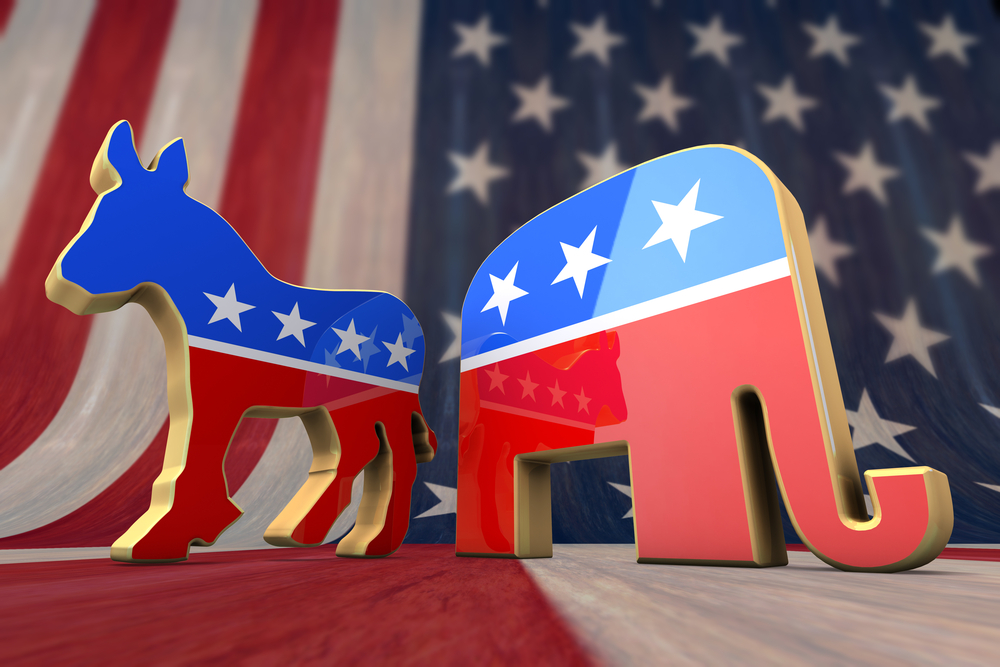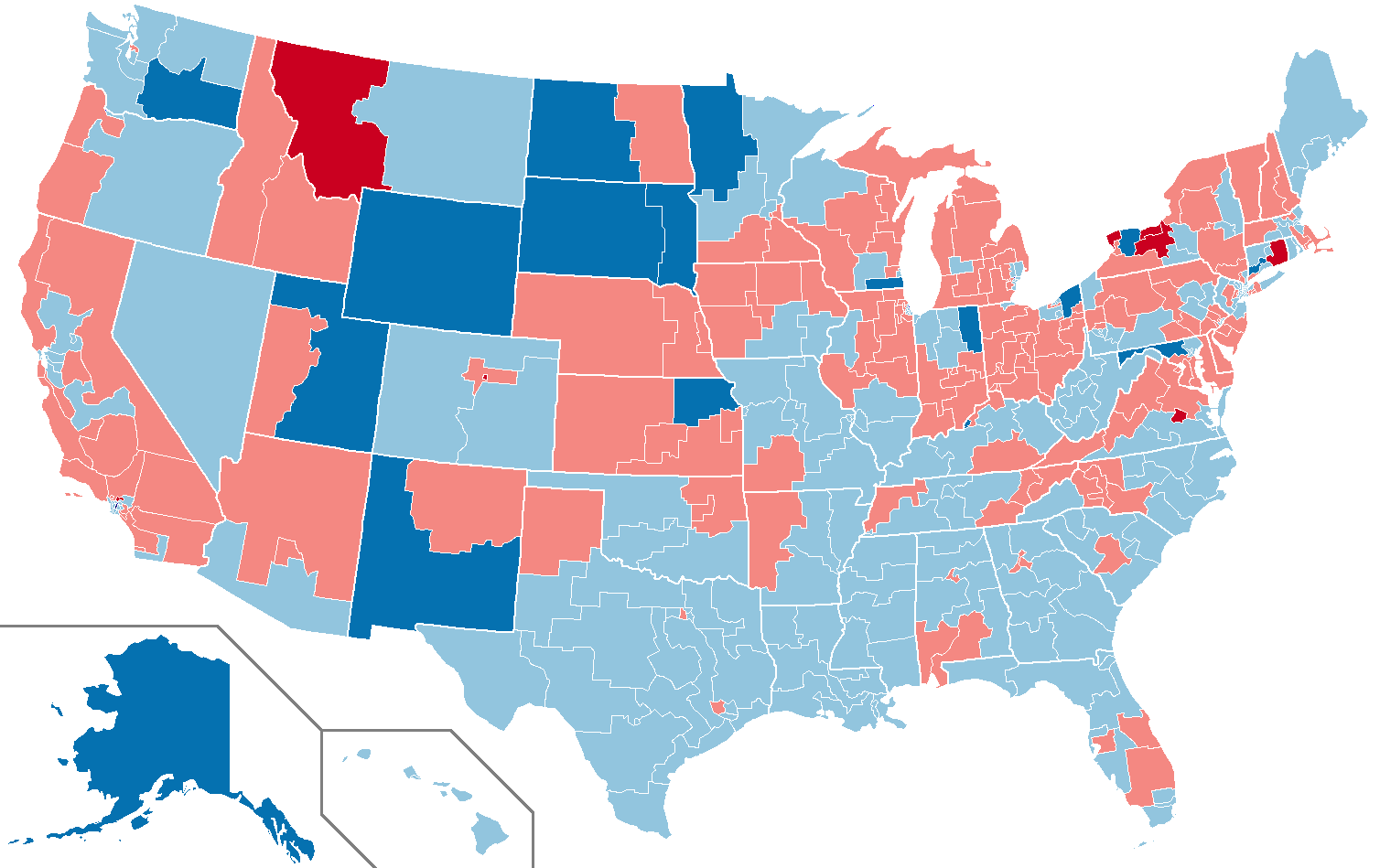US Party System Evolution
A quick overview and some examples to start a longer conversation.

(This is the start of a broader conversation that I have been meaning to start for some time but comments today have brought this to the fore of my mind).
Some broad brushstrokes (all of which are complicated in their own right) that are needed background:
- The current Democrat-Republican duopoly has its origins in the period just prior to the US Civil War and was consolidated after the war.
- The party labels have persisted since the mid-19th Century, and the Democratic Party can arguably trace its roots back to Jefferson’s Democratic-Republicans as it evolved into Andrew Jackson’s Democratic Party.
- The Reconstruction Era in the former CSA led to long-term hatred of the Republican Party in the region, resulting in the Democratic Party being dominant in the southeast from the later 1870s until the 1990s (and beyond).
- The solid (or near solid) Democratic South meant that the main election was in Democratic primaries, not the general election.
- The evolution of two-party competition (and to eventual GOP dominance) in the South was a gradual affair that started at the presidential level and filtered to other federal offices and eventually to the state and local levels.
- While there are outlier examples (such as John Tower in Texas in 1961 winning the special election to replace LBJ in the US Senate) the real re-alignment event was the 1994 “Republican Revolution” in the House. This then led to party-switching by a number of conservative Democrats (such as Alabama Senator Richard Shelby).
The long-term historical points should help us recognize that the party labels have persisted for a long time as containers, even as the exact contents of the containers has shifted over time.
Any full examination of this shift would need to look at multiple levels, i.e., presidential, congressional, statewide executive and judicial, state legislatures, and then local office to see the whole picture. However, the key institution for looking at a national party system is typically the first chamber of the national legislature, which is, in the case of the United States, the US House of Representatives.
So, consider: from 1933 until the 1994 election (the 75th Congress to the 103rd), Democrats controlled the US House for all but two sessions (the 80th Congress, 1947-1949 and the 83rd, 1953-1955). A significant reason for this was that the Republican Party was nearly non-existent in the South (in terms of competitiveness). It also meant, therefore, that the Democratic Party in Congress was a coalition that spanned liberal to conservative. As such, when people look back with fond memories of how the House (and Congress in general) used to work together better than it does now, don’t forget this fact.
1994 was the watershed election that led to a substantial change in national party politics.
Note these maps for comparison (red is Rep, blue is Dem). Check out the southeast:
1992:

1994:

1996:

Note, for example, that Mississippi was solid blue in 1992. Look at AL, GA, TN and TX (and so forth).
Compare that map to 1970:

Note, too, that in many southern states, the GOP did not win control of state legislatures until the 2000s (that was true in both Alabama and Texas, for example). In the late 1990s one would find a lot of local southern elections being contested by Democrats only. These days it is more likely that this is true for Republicans.
There is a lot more to say about this, but this is as much time as I can afford during lunch.
But the basic point is this: the party system took a very significant turn in 1994 wherein ideology and party aligned more closely and set the stage for our current polarization. And this realignment has caused a lot of the stress on the constitutional order (such as checks and balances) because the Democrats are no longer a party that in the Congress contained a broad coalition. In simple terms, liberal Reps have become Dems and conservative Dems have become Reps.
More later.






Thanks for this. I look forward to further installments
I always figured that the allegiance of southerners to the Democratic Party didn’t stem from any fondness for democratic principles, but was purely in reaction to their hatred of northerners, whom they equated with Republicans after the Civil War. Totally irrational, in other words. “If they’re Republicans, we’ll be Democrats!”
1992 is the pivotal year for the GOP. Bush–old school WASP–losing plus Perot’s populism and Buchanan’s culture war as class war message set the stage for what followed.
I would add the current emerging (emerged?) geographical split. Take the 13-state West, the 12-state (plus DC) northeast urban corridor, and the 25-state Rest. In 2016, Clinton got — ignoring faithless electors and the NE/ME oddities — 104 EC votes from the urban corridor, 98 from the West, and 30 from the 25-state Rest. Trump is very largely a Midwest/Southern president.
For the US Senate, without the Dems picking up Arizona and Nevada in 2018 (while losing four in the Rest), and the probable pickups in Arizona and Colorado this year, no one would be talking about the Dems winning the Senate.
Yes, good conversation starter.
While I’ve dabbled in Comparative (American was my second doctoral subfield and I consider American a branch of Comparative), my natural instinct is to focus on the Presidency. (Partly, because of my professional focus on national security policy.) The South started the shift to the GOP earlier at that level than it did at the Congressional and, especially, Gubernatorial, level. But I agree the House is really the place to track “alignment.”
When the map colors changed, the personnel didn’t. Strom Thurmond was a Democrat till 1964 when he switched in opposition to the Civil Rights Act. There were others who switched jerseys without changing jobs or ideology.
I think that Washington’s farewell warning us against parties was prescient.
@CSK:
Southerners also worshiped FDR as he used Federal money to drag the economy into the the 20th century. If it wasn’t for the Rural Electrification Commission, large parts of the south would be still be using oil lamps for light. Reliable electricity allowed the south to poach northern industries when new technology had made the old riverside mills obsolete. Add to that southern Dems willingness to make union organizing difficult made it quite attractive for the northern industrialists to move south.
Southern unionist also loved FDR, because he gave them cover in coal country.
Looking forward to these posts!
@Sleeping Dog:
Yes, they’re a confused bunch. Florence King wrote that the southerners’ way of dealing with Franklin and Eleanor Roosevelt was by blaming Eleanor, whom they hated, for anything Franklin did that they didn’t like.
Well–the pick is in!
https://www.npr.org/2020/08/11/897427306/in-historic-pick-joe-biden-taps-kamala-harris-to-be-his-running-mate
@Jim Brown 32:
Harris was your pick, I recall.
@Sleeping Dog:..Rural Electrification Commission.
I believe you are thinking of the Rural Electrification Administration created in 1935 as part of FDR’s New Deal. It also loaned money to rural telephone exchanges starting in 1949.
Today the former REA has been reorganized as the Rural Utilities Service in the Department of Agriculture.
@Mister Bluster:
I suspected I might be wrong on commission, but hey
One thing that’s immediately clear looking at those maps is that 1970 was really… groovy! It’s like having all those black light posters back again.
What caused 1994 to finally be the realignment and sorting that we would have expected for the previous 20 years? Why then and not 1980 (The Reagan Revolution) or 1968 (following the civil rights act, and when everything seemed to go haywire)?
@Gustopher: I believe that was generational. The boomers and Ge Xers came of age politically during the Reagan Revolution and started out as Republicans while their parents remained Conservative Democrats (splitting their tickets from the 197os between the Presidency and Congress) until death. By 1994, they were in their 30s & 40s and ready to enter politics. This also coincided with growth of sunbelt cities that finally had enough population to create an exurban filled with mostly white middle class conservative families.
@Gustopher:
It takes time for changes that occur at the level of presidential elections to percolate to downballot offices. By the late 1960s white Southern voters concluded that the national party had drifted away from them with nominees like Humphrey, McGovern, Mondale, and Dukakis (though they briefly came back into the fold for Carter), but at the state and local level they still had politicians who “fit their values” and who could differentiate themselves from the national party–a situation that was kept along for a while through the power of incumbency.
And (as Steven Taylor notes) it didn’t end in 1994. The 2014 midterms were a final nail in the coffin for Democratic office-holders in a number of Southern states. Even to this day you see little itty bitty relics of the old Solid South if you look hard enough: for instance, North Carolina hasn’t elected a Republican Sec. of State since Reconstruction.
@CSK: Yes I thought she best balanced out Joe. I have a lot of relatives in the Bay area—they hate her for her work as Prosecutor.
@Gustopher:
In addition to what @Robert and @kylepod said, it didn’t help that the first 2 years of Clinton’s administration were an absolute cluster eff, His mid term beating wasn’t Obama bad, but it gave the House to the R’s
@Jim Brown 32:
That’s a good thing.
@Gustopher:
“What caused 1994 to finally be the realignment and sorting that we would have expected for the previous 20 years? Why then and not 1980 (The Reagan Revolution) or 1968 (following the civil rights act, and when everything seemed to go haywire)?”
I think it was a far more gradual process, with many seats being flipped into Republican hands in the 1980’s, as well as sitting officeholders changing parties from Democratic to Republican throughout the 1980’s (Phil Gramm being one of the more prominent ones). In 1980, Senate seats flipped from D to R in Alabama, Florida, Georgia and North Carolina as part of a large Republican national wave. In 1982, Republicans saw their only Senate gain in Virginia, while losing 2 seats outside the South. In 1984, Republicans saw their only Senate gain in Kentucky, while losing 3 seats (including in Tennessee).
This is very interesting.
I was aware of the old “solid South” Democrat dominance, arguably largely a legacy of the Civil War etc. and the coalition building of Wilson and Roosevelt.
(If you look at the 1916 presidential returns by county, at a casual glance it’s remarkably similar to the above map for 1970!)
But what I really didn’t appreciate was how similar 1992 looks to both, at first sight.
If asked I’d have made a wild guess that the change came in the 70’s/80’s, and been completely wrong!
Also interesting, that in geographic spread Democrats seem to have retreated due the switch of the South.
But numerically balanced out by the Democrats in the NE /urban Great Lakes area, and West Coast, due to the rising population in these areas?
And that this rise in “solid Red” areas has provided a social reinforcement of the ultra-Republicans ideological tendency to view the Democrats as somehow politically illegitimate?
(And vice versa?)
@Sleeping Dog: I’m not sure I buy into the generational shift… as there wasn’t a massive die-off in 1994. I think people changed their votes, and Clinton might have done it.
Perhaps even Hillary Clinton. People — well “people” — hated her role in the health care plan. The overly complicated health care plan. From a woman. Worse than a woman, a Clinton woman. (I like her more than that husband of hers…)
@Jim Brown 32:
Mightn’t that hate make reason to wonder about the wisdom of the choice, or is this your theory of, if you will allow, black realpolitik coming to the forefront?
@Slugger:
TBH no modern democracy can function without parties, so while I understand Washington’s concern, it was ill-informed.
@Sleeping Dog:..hey…
More than a few of the jobs I worked in rural telephone exchanges over the years were projects funded by the REA. Another example of my federal income tax contributions being returned to me.
I gotta’ show proper acknowledgment.
@Slugger:
@Steven L. Taylor:
We have to recall, Washington’s main frame of reference was likely later 18th Century British politics, where the the parties were mainly competing for patronage and profit; “Old Corruption” as the Victorian reformers called it.
The old areas of disagreement on principle (e.g. Hanoverian/Stuart, Anglican/Dissenting etc.) were largely dead letters.
And when such matters of principle were active concerns, they were arguably worse still: genuinely dangerous to British civil peace.
(see Civil Wars, Monmouth Rebellion, Revolution of 1688, Jacobite Wars etc)
@Just nutha ignint cracker: There seems to be a small segment of the BLM crowd that is hostile to her prosecutorial record and do not find her authentic. This outrage was trending on Twitter last winter but seems to have subsided. Meanwhile, many college educated middle age AAs like myself are ecstatic.
@JohnSF: Washington reflected a general view at the time that parties as a general notion were a problem (the part against the whole, or specific interests versus the common good).
And I understand what he was warning about, I am just noting it wasn’t a good warning to be echoed over time for a variety of reasons.
@Steven L. Taylor:
Wholly agreed.
Just footnoting 🙂
(see also Washington on “entangling alliances”)
The interesting thing is that parties based on principles rather than factional advantage and graft arguably (re)emerged earlier in the US than in Britain i.e. “federals” versus “Jeffersonians” in the 1790’s on.
In Britain faction remained the foundation until electoral reform, free trade, and administrative reform came to the fore in the 1830’s. IMHO.